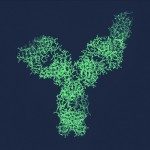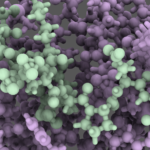Link to Pubmed [PMID] – 25285479
J Chem Inf Model 2014 Nov;54(11):3067-79
The specific properties of protein-protein interactions (PPI) (flat, large and hydrophobic) make them harder to tackle with low-molecular-weight compounds. Learning from the properties of successful examples of PPI interface inhibitors (iPPI) at earlier stages of developments, has been pinpointed as a powerful strategy to circumvent this trend. To this end, we have computationally analyzed the bioactive conformations of iPPI and those of inhibitors of conventional targets (e.g enzymes) to highlight putative iPPI 3D characteristics. Most noticeably, the essential property revealed by this study illustrates how efficiently iPPI manages to bind to the hydrophobic patch often present at the core of protein interfaces. The newly identified properties were further confirmed as characteristics of iPPI using much larger data sets (e.g iPPI-DB, www.ippidb.cdithem.fr ). Interestingly, the absence of correlation of such properties with the hydrophobicity and the size of the compounds opens new ways to design potent iPPI with better pharmacokinetic features.

